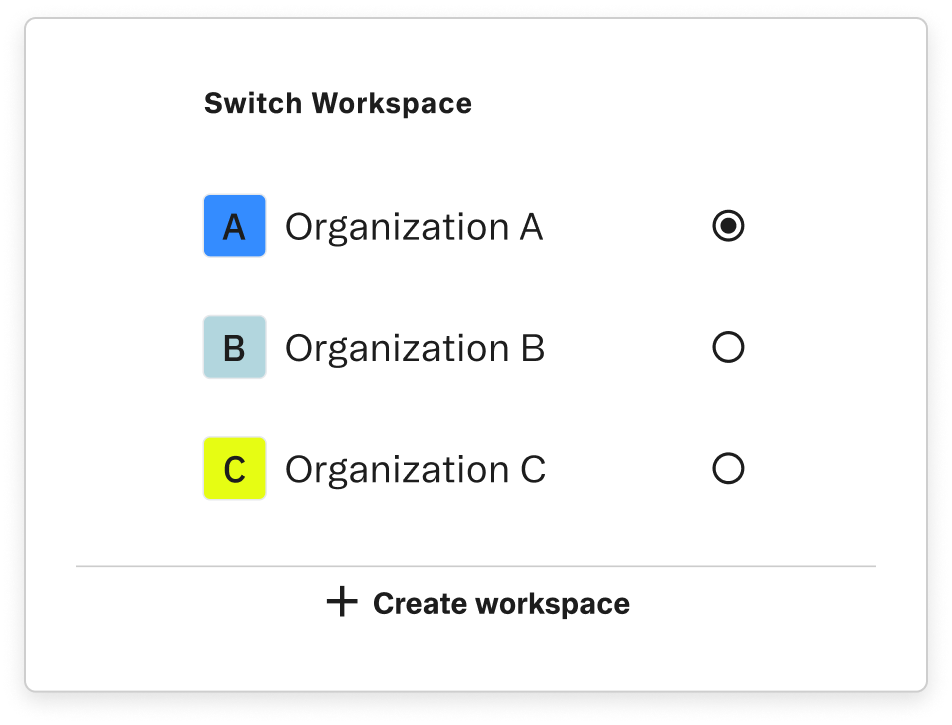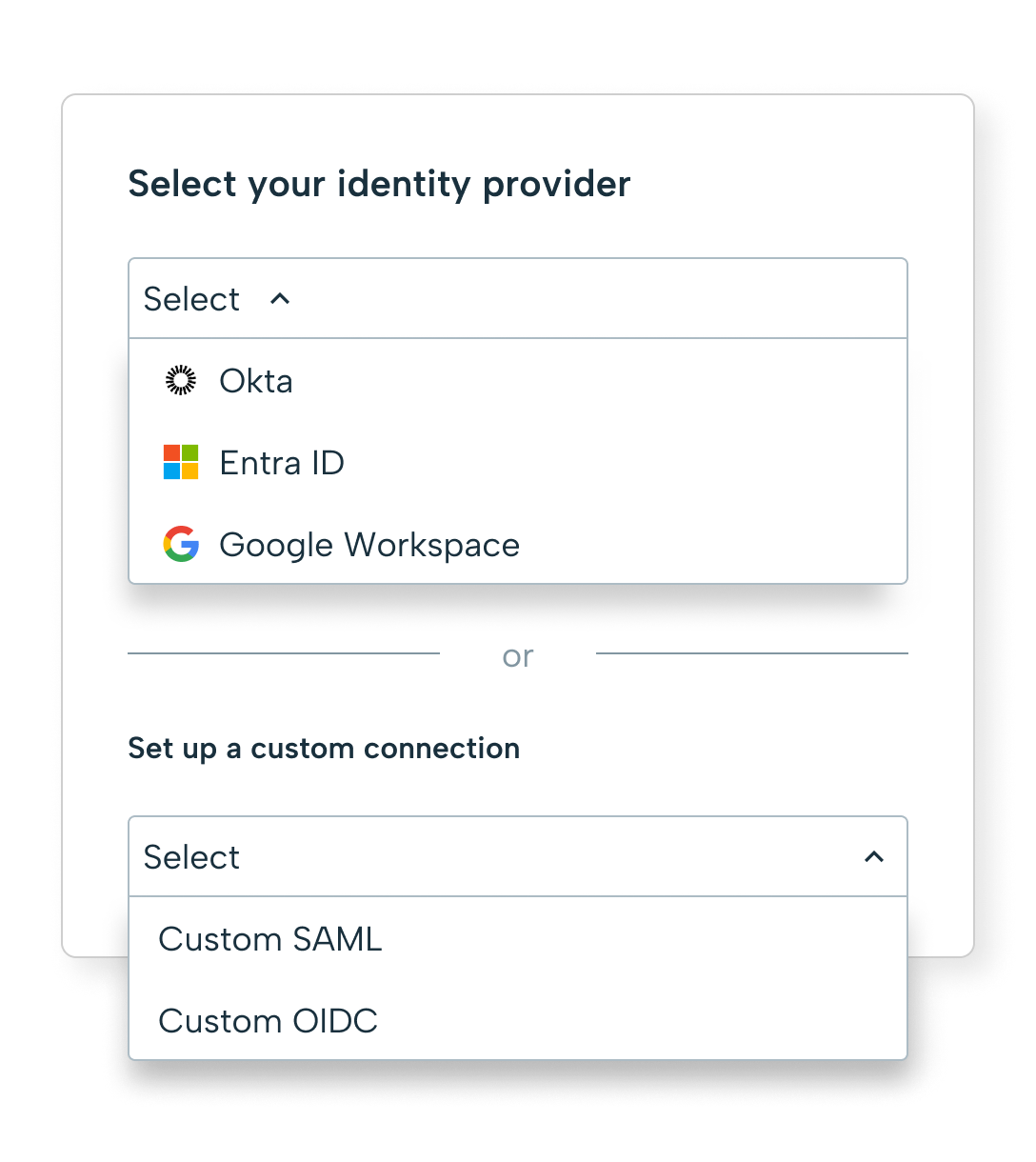Identity platform
built for what’s next
Authentication, authorization, and security—one integration to make your app
enterprise-ready, agent-ready, and threat resistant
The Stytch difference

Full control of your login experience
Pre-built frontend, headless SDKs, and backend APIs to offload as much or as little as you need.
Multi-tenant and user-focused data models, so you don’t have to write custom logic to make your auth vendor work with your app.
Fine-grained API access to auth features, so you can easily tailor functionality for every customer and organization.
Build once, scale effortlessly
MFA, JIT, RBAC, SCIM, SSO — enterprise auth features that are easier to implement and scale out-of-the-box.
Embeddable admin portal for your customers to self-serve auth settings, SSO, SCIM, and more, all from your dashboard.
Native multi-tenancy, so SCIM is ready to use with RBAC, auth settings are easily configured per org—everything just works.
Real-time fraud and abuse protection
The industry’s most accurate bot detection, to stop account takeover, credential stuffing, and the latest AI-driven threats.
Built-in enforcement tools including security verdicts, invisible CAPTCHA, and intelligent rate limiting.
Device level traffic shaping ensures valid users are undisturbed while bad actors and bots are removed.
Your next auth feature – just a PUT request away
Support both SAML and OIDC protocols for SSO with ease
SSO set up
curl --request PUT \
--url
https://test.stytch.com/v1/b2b/organizations/{ORGANIZATION_ID} \
-d '{
"allowed_auth_methods": ["sso"],
}'curl --request PUT \
--url
https://test.stytch.com/v1/b2b/organizations/{ORGANIZATION_ID} \
-d '{
"allowed_auth_methods": ["sso"],
}'Turnkey multi-tenancy

Organization-first features
Auth features that are native to multi-tenancy, for easily handling any customer requirement: per-org auth settings, multiple SSO IdPs, and SCIM settings that works out-of-the-box with RBAC.

Embeddable admin portal
An SDK to embed complex auth settings and user/org management into your dashboard, letting customers self-serve SSO, SCIM, and other complex auth features without involving your team.
What engineering teams are saying
The Stytch team has been a great partner. We’ve really appreciated the open and responsive way they worked with us, and how they’re continually improving and expanding the product. Having the world move forward without me having to move it forward myself is really nice.
The Stytch team has been a great partner. We’ve really appreciated the open and responsive way they worked with us, and how they’re continually improving and expanding the product. Having the world move forward without me having to move it forward myself is really nice.
Resources
Example apps
See how Stytch compares
Expert support at every step

